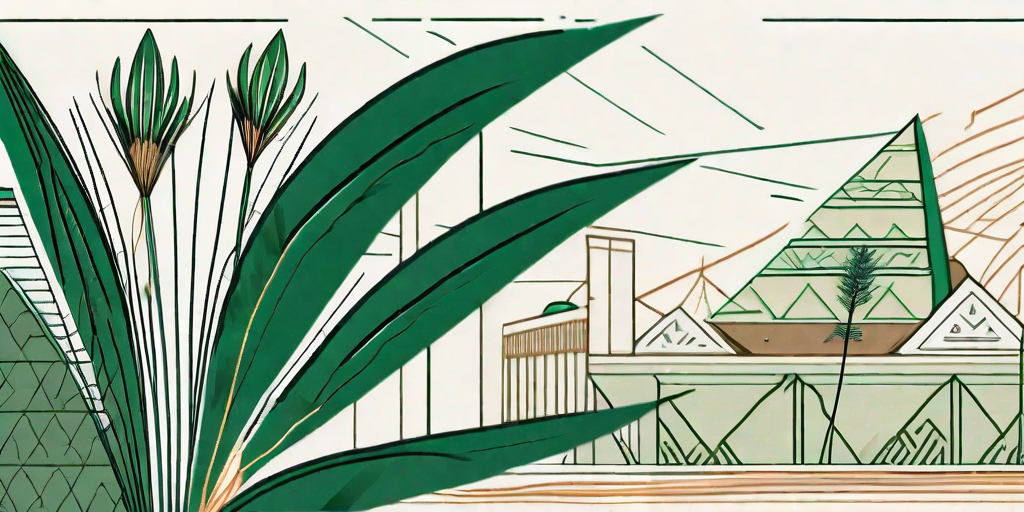
Welcome, dear reader, to an exciting journey through time and across continents. We're about to embark on an exploration of the papyrus plant, a botanical wonder that has played a pivotal role in human history and continues to be of great significance today. Buckle up, it's going to be a wild ride!
The Origins of the Papyrus Plant
Our story begins in the marshy wetlands of ancient Egypt, where the papyrus plant first made its mark on human civilization. This tall, reed-like plant, with its triangular stem and feathery crown, was a common sight along the Nile River. But the Egyptians saw more than just a pretty plant. They saw potential.
They discovered that the papyrus plant was not only useful, but versatile. They used it for making boats, baskets, sandals, and most notably, paper. Yes, you read that right. The word 'paper' actually comes from 'papyrus'. So, the next time you're jotting down your grocery list, take a moment to appreciate the humble papyrus plant.
The Papyrus Paper-Making Process
The Egyptians had a rather ingenious method for turning papyrus into paper. They would cut the stem into thin strips, lay them out in a grid pattern, and then pound them together. The natural sap in the plant acted as a glue, binding the strips together into a sheet.
After drying in the sun, the result was a smooth, durable surface perfect for writing. This was a game-changer in an era when writing materials were scarce. Suddenly, people had a cheap, readily available medium for recording their thoughts, laws, and stories. The papyrus plant had officially made its mark on history.
The Papyrus Plant in Modern Times
Fast forward a few millennia, and the papyrus plant is still with us. While we may not be using it to make paper anymore (thanks, Gutenberg), it has found a new lease of life in other areas.
Today, the papyrus plant is a popular choice for water gardens and ornamental landscaping. Its tall, graceful form adds an exotic touch to any setting, and its ability to grow in water makes it a practical choice for ponds and wetlands.
Papyrus in Art and Craft
But the papyrus plant isn't just a pretty face. It's also a favorite among artists and crafters. The plant's stems can be woven into baskets, mats, and other decorative items, much like they were in ancient Egypt.
And let's not forget about papyrus paper. While it may not be the go-to choice for your office printer, it's still prized for its unique texture and historical significance. Artists use it for calligraphy, painting, and printmaking, and it's a popular choice for making replicas of ancient documents.
FAQs about the Papyrus Plant
Is the papyrus plant easy to grow?
Yes, the papyrus plant is relatively easy to grow, as long as it has plenty of water and sunlight. It can even grow in standing water, making it a great choice for water gardens and ponds.
Can I make my own papyrus paper?
Yes, you can! All you need are some papyrus stems, a sharp knife, and a little patience. Just remember to ask the plant's permission first. It's only polite.
Fun Facts about the Papyrus Plant
- The papyrus plant can grow up to 5 meters tall. That's taller than your average giraffe!
- Papyrus was used to make the first paper-like material, but it's not actually paper. Real paper is made from pulped wood, not pounded reeds.
- The ancient Egyptians also used papyrus to make boats. They would weave the stems together into a raft, then cover it with pitch to make it waterproof.
Conclusion
So there you have it, folks. The papyrus plant: from ancient paper-maker to modern garden star. It's been quite a journey, hasn't it? But then again, the papyrus plant is no ordinary plant. It's a plant with a past, a plant with a purpose, and a plant with plenty of pizzazz.
So the next time you see a papyrus plant, don't just see a plant. See a piece of history, a work of art, and a testament to the ingenuity of both nature and mankind. And maybe, just maybe, you'll feel inspired to embark on your own papyrus adventure.















